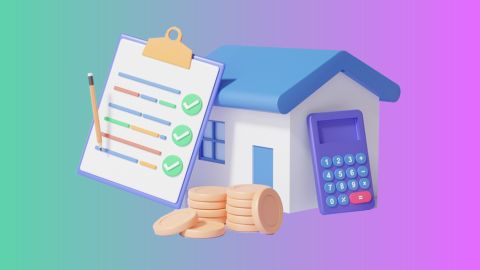An Encumbrance Certificate (EC) is a crucial document for property transactions, proving that the property is free from any legal or financial liabilities. Whether you are buying or selling property, or even applying for a loan, understanding how to apply for an encumbrance certificate is essential. This guide provides a comprehensive overview of the process, from preparation to tracking your application status.
Understanding the need for an encumbrance certificate
Before diving into the application process, it is important to understand why an EC is necessary. This certificate is a legal document that ensures a property is not mortgaged and has no legal dues. It provides a transparent history of all financial transactions related to the property, which is vital for:
- Buyers to verify the property's clean title.
- Sellers to prove their property's legitimacy.
- Banks and financial institutions to sanction loans.
An EC safeguards buyer from fraud, helping them make informed decisions. Sellers benefit from having an EC as it reassures potential buyers about the legitimacy of the property, facilitating smoother transactions. Financial institutions require an EC to ascertain that the property against which a loan is being taken is free from any encumbrances.
Preparing for encumbrance certificate application
Preparation is key when you apply for an encumbrance certificate. Here are the steps that you should follow:
- Gather the necessary documents: You will need property details, sale deed, previous EC (if any), and your identity proof.
- Verify property details: Ensure that all property details are accurate and up-to-date to avoid any discrepancies during the application process.
- Understand the jurisdiction: Check which sub-registrar office has jurisdiction over your property as applications are processed at the local level.
Having all required documents ready and verifying that the information can significantly expedite the application process and reduce the likelihood of errors or rejections.
Application process for encumbrance certificate
Here is a step-by-step guide on how to apply for an encumbrance certificate:
- Visit the official portal or the local sub-registrar office: Depending on your region, you can either apply online or visit the sub-registrar office.
- Fill out the application form: Provide accurate details about the property and personal information as required.
- Attach the necessary documents: Submit the gathered documents along with the application form.
- Pay the application fee: Fees vary based on the region and the period for which the EC is required.
- Submit the application: Once all steps are completed, submit your application for processing.
It is essential to double-check all the details provided in the form to ensure accuracy and avoid delays. Depending on the region, you may also have the option to apply online, which can simplify and speed up the process.
Tracking encumbrance certificate application status
After submitting your application, you can track its status to stay updated on the progress. Follow these steps to track your EC application:
- Log in to the official portal: Use your application credentials to access the tracking feature.
- Enter application details: Input the application number or other required details to check the status.
- Monitor updates: The portal will provide real-time updates on the status of your application, including any actions required from your end.
This tracking system ensures transparency and keeps applicants informed, reducing anxiety, and uncertainty regarding the application status.
Timelines and processing period
The processing time for an encumbrance certificate can vary based on several factors, including the region and the completeness of your application. Typically, it takes anywhere from 15 to 30 days. It is advisable to apply well in advance of any planned property transactions or loan applications to avoid delays.
In some cases, the process may take longer due to discrepancies in the application or additional verification requirements. Staying proactive and promptly addressing any issues can help expedite the process.
Applying for an encumbrance certificate is a critical step in ensuring a smooth and transparent property transaction. By following the outlined process, you can efficiently obtain your EC and safeguard your property dealings. Whether you are buying, selling, or securing a loan, an EC is indispensable. Additionally, for those considering leveraging their property for financial purposes, Bajaj Finance offers loan against property options, using the EC as a key document in the approval process.
An Encumbrance Certificate ensures your property is legally clear, paving the way for you to take out a high-value loan against property. Bajaj Finance lets you tap up to Rs. 10.50 crore based on your property's market value—without having to sell it. With low interest rates, no end-use restrictions, and flexible repayment, you retain ownership while realising your dreams: from business expansion to higher education or renovations. Get a loan of up to Rs. 10.50 Crore* with the option of interest-only EMIs during the initial tenure.




